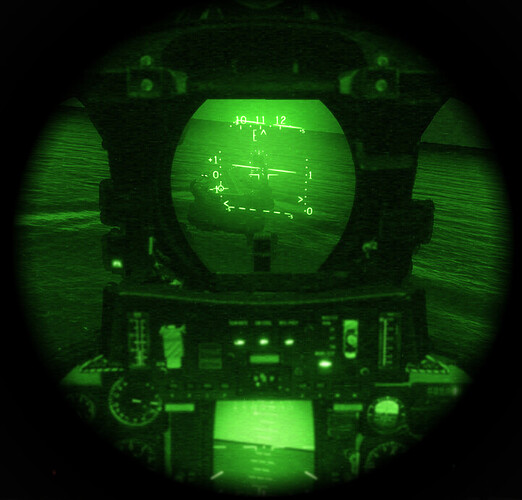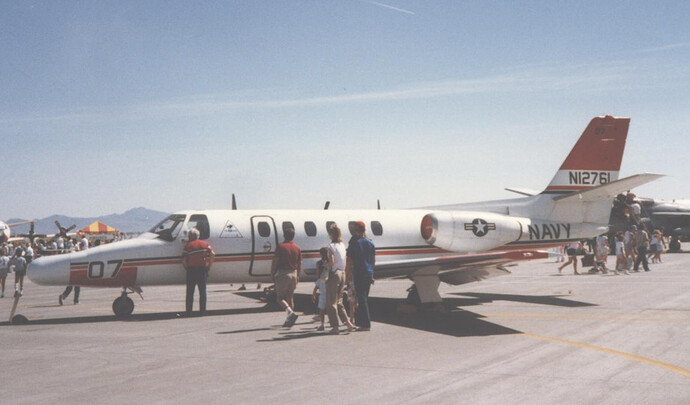@Wes had a lot of trouble with it too. I think a lot has to do with hardware; I have a CH stick which is very light on the springs.
Maybe … I’m using TM T16000M FCS HOTAS, it’s not bad but I can surely blame it, lol.
Darned cheap hardware made on a Friday!
Yes, to anyone using an unmodified (stock spring, no extension) HOTAS Warthog - I wholly recommend my “bump stick” method.
Flailing usually starts when you try to ease the stick out of the center zone where the spring causes a sort of “stiction”, followed by attempting to correct in the opposite direction, thereby having to pass through the center zone again, and compounding the problem.
What I do instead, rather than hold the stick for or aft, and go over too far - is quickly “bump” the stick in either direction and allow the spring to neutralize it. This lets you give a smaller input than the spring force allows. For anyone into anything electrical - it’s akin to applying a duty cycle.
My second go to method, is to trim the aircraft to not fly neutral and put it into a nose-up situation. This causes me to have to hold the stick forward, past the center zone. From here, I can adjust the controls without having to overcome any “stiction”. The caveat is that since there is no neutral, this can wear your hand/wrist/forearm down over a longer period - which led to the bump method above.
Either keeps you from needing wild curves on the axis (of which I only typically set to ~20).
Alright, so I got home last night, threw on the Reverb, and booted up the refueling quick mission in the F-14 to see how it would go (I did not practice it beforehand). It actually went pretty well. I mean, the first stab at it was pretty ugly, but the second approach and contact were OK.
Next I’ll try the Harrier and see if my memory of how hard that is is true…
With mirrors on…! ![]()
What kind of FPS are you seeing?
Hey Wes, that’s a great post for Warthog users. I’ve been struggling with refueling and flying close formation for a while now, probably since I switched to a WH. I’ll try the bump method first to see if it helps, then the pressure method, which sounds similar to what the Blues have in their adjustable spring mod for the Hornet.
I’m also thinking about replacing the base with something like the WarBRD.
Whoa. That’s hella impressive maestro.
Actually, the Harrier wasn’t as bad as I remembered it. Might take a minute to load in HD…I think it is still processing…
Me after going through the four AN/AWG-9 tutorials…

I think you cheated using that Reverb. Their should be a Reverb penalty of 1500 lbs or something similar ![]()
I seem to recall that they did a study and night landings caused the pilots heart rates too jump exponentially higher than actual combat.
Wheels
Well for one, your HUD and VDI are set too bright.
Yeah…I bumped them down a bit after that screen…and obviously I wasn’t lined up on the carrier…it was just the only screen that somewhat came out.
So this might be a more general DCS question and not specific to the F-14, but from what I’ve observed, different models have different distances at which they can become visible with the LANTIRN pod.
For instance, I set up a basic laser-guided bombing mission and with an IL-76, L-39, and T-80 set as ground targets, I was able to see the blip of the T-80 from 25nm away (not enough to discern what it was…but it was definitely there) whereas the IL-76 static target didn’t come into view on the LANTIRN display (at the high zoom level) until around 11nm. Are the differences based in the properties of the objects themselves or is it a setting in the sim/graphics menu that causes this to happen?
Also, is anyone getting hits with the Phoenix beyond 100nm? I can detect big objects like the Tu-95 at 140nm, lock at 106nm, shots at 100nm missed (though they did get close), shot at 65nm hit.
Against a MiG-29 I saw a detection at 88nm, lock at 79, and a miss at 79nm.
Visual ID through the optics was possible at 25nm based on being able to see the wing shape…although you would have known it earlier based on the RWR.
A shot at 25nm against the MiG with the Phoenix is pretty effective, with the missile taking a flat trajectory and accelerating to 2100 knots - that makes short work of that distance.
I was also finally able to do the dance between the front and rear cockpits and drop some laser guided bombs and have them hit things. Jester kind of works against you when you are doing those attacks…so turning him off I found was the best option. Having a human pilot/RIO is even better of course. If work will ever let me rest, I’d love to hook up and give that a whirl. I hate to commit to someone and get paged right as we all get set up though.
A fighter sized target at long range is most likely not going to hit. When the AI detects an active missile seeker they will turn and run away, dumping chaff as they go.
As an example, you can kill a plane coming head on at 35,000ft with an AIM-120C in the Hornet from 40nm, but if they turn around it’s not going to get close. In fact, even a shot from 20nm may not make that trip.
My rule of thumb for Phoenix shots on fighter targets, STT: Maximum range of 60nmi, 50nmi better, 40nmi best. TWS knocks that off by 10nmi per each range and I generally don’t recommend using TWS on fighter sized targets unless the situation is really desperate. Goes double with Chester in the back as trying to manage his TWS scan zones while flying is pretty rough. Larger targets you can extend STT distances out by 20nmi, TWS by 10nmi for the above. Remember the type of AIM-54 you have as well, since the A series will go stupid if you lose track, the Mk60 motor has a slightly greater burn time, and the C version will go active if you lose track.
Ground targets are wonky in draw distance, in particular static objects have some hard render distance and you won’t see them til they pop up at some arbitrary range. Ground columns are rendered a bit further.
I highly recommend the pilot LANTIRN mod til Heatblur gets Chester up to speed on usage of the pod, just makes it way easier to fine tune things.
To wit: N265CM Flight Tracking and History - FlightAware
I need an AN/AWG-9 in our Citation. Actually, I think Customs and Border Protection DO have a Citation with an AN/AWG-9…and the Navy certainly used to…
I don’t think your patient, employer and fellow crew would appreciate it if you took that citation for a spot of BFM ![]()



